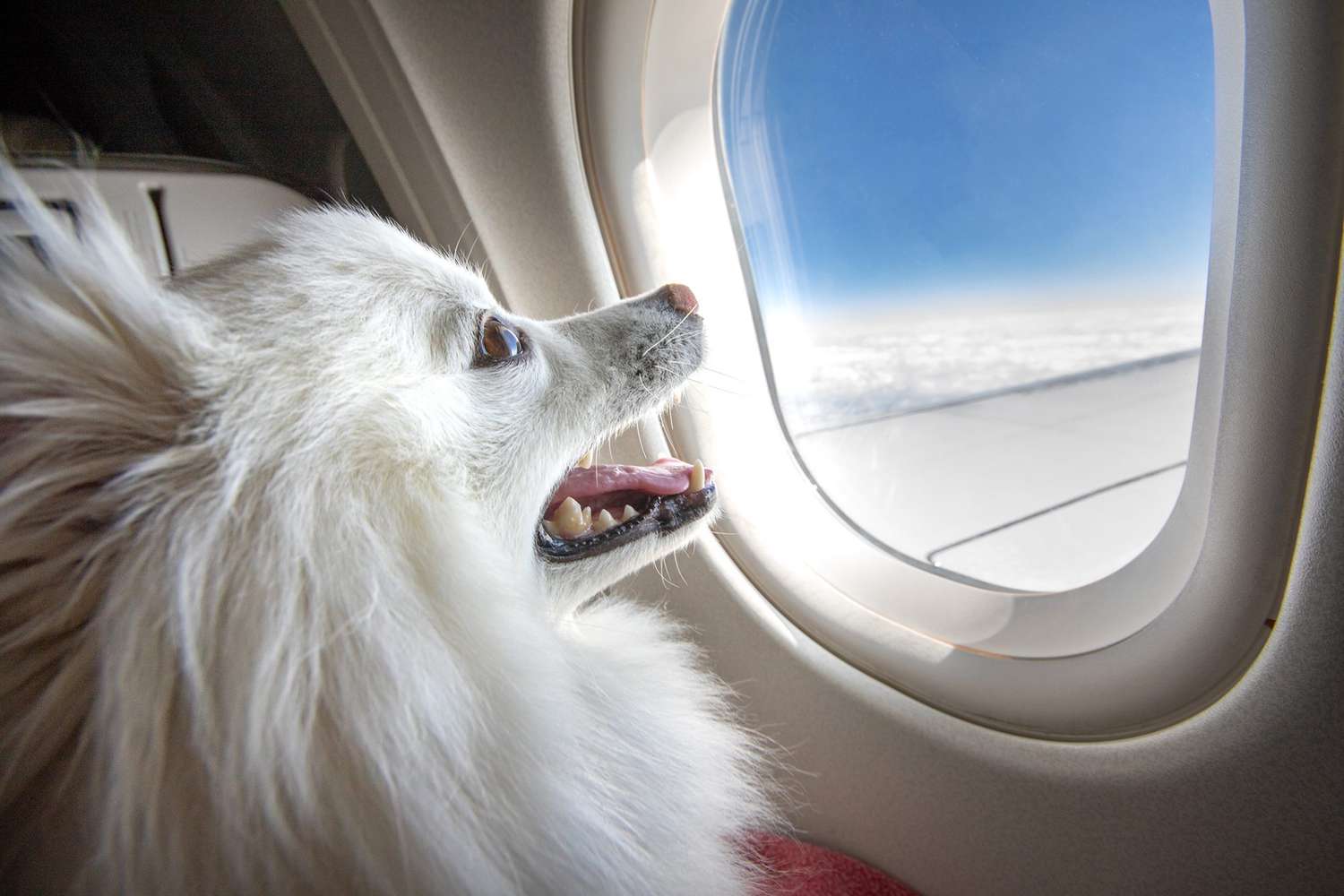If you like to travel but don’t want to leave your dog behind, you should learn about the rules, laws, and safety tips for flying with a dog. After all, no one wants to be stuck at the airport because their flight won’t let them bring their dog on board.
To avoid this, we’ve put together a list of the best dog breeds for flying, companies that allow pets, and other important travel tips to keep your dog safe and comfy in the air.
Can I Carry My Dog With Me on a Plane?
There are different rules for taking your dog on an airplane for each company. Whether or not you can bring your dog into the cabin with you depends a lot on how big and heavy your dog is. If you are going with a service dog or an emotional support dog, the rules may be different.
Here is some general information that will help you figure out if you can bring your dog on your trip.
Size, Weight, and Age
Airlines usually let small dogs weighing less than 20 pounds travel in the cabin. To ensure safety, the dog must stay in a carrier throughout the flight and not bother other passengers. If your dog weighs more than 20 pounds, the airline might ask you to have your dog fly in the cargo hold of the plane. Different airlines have different weight restrictions, so it’s important to confirm with your airline before you book your ticket.
The United States Department of Agriculture (USDA) regulates the air transportation of pets. They have a rule that dogs must be at least 8 weeks old and fully weaned from their mother before they can fly on a plane.
Different airlines may have their own rules about how old your dog needs to be. It is not recommended to transport puppies younger than 12 weeks old. This is because young puppies have not received all of their vaccines and are more susceptible to getting sick compared to older dogs.
Pet Carrier
To bring your dog on a plane, you need to use a pet carrier that is suitable for airplanes. This carrier should be able to fit under the seat in front of you. Remember that you will have to go through airport security with your carrier. Therefore, it should be easy for you to get your dog in and out of the carrier whenever necessary. When flying with your dog, it’s important to have a dog carrier that is well-ventilated, lightweight, and secure. This will ensure that your dog stays safe and comfortable during the journey.
Rabies Vaccine
Certain airlines may require you to provide proof of vaccinations or health certificates from your veterinarian if you want to bring your dog on a flight. Different airlines have varying vaccine and health requirements. However, it is important to note that all airlines operating in the U.S. do require passengers to have an up-to-date rabies vaccination.
Flying with Dog in Cabin Area
Most Airlines Pet Policy allows dogs weighing less than 20 pounds to travel in the cabin area. Here are some of the best dog breeds to fly with on a plane:
- Chihuahua
- Yorkshire terrier
- Toy Poodle
- Maltese
- Brussels griffon
- Japanese chin
- Pomeranian Pekingese
- Bichon Frise
If you are bringing your dog with you as a carry-on, you will need to put your dog in a safe carrier under the seat in front of you.
Almost all flights require pet fees. Cabin fees are usually cheaper than fees for transporting dogs in the plane’s cargo area.
Can I Purchase a Seat for My Dog?
Most airlines offer the option to purchase a seat for your dog on a plane at the regular price. If you don’t know how to book a ticket for your pet with Southwest Airlines , then visit the Southwest Airlines Pet Policy to learn how to do this. This feature provides more space for larger dogs and allows your dog to be at your level, making it easier to reach during the flight. If you feel anxious when your dog is at your feet or if you want more space to relax with your pup, it might be a good idea to buy them their own seat, if you can afford it.
Is It Safe to Transport a Pet as Cargo?
If your dog weighs over 20 pounds, it might need to travel in the cargo hold of the plane. You won’t be able to see your dog during the flight if they are in the cargo hold. But not all airlines offer this option because the cargo deck needs to be pressurized for pets to travel.
Certain airlines, like JetBlue and Southwest, have made changes to their policies regarding the transportation of dogs. These airlines no longer transport dogs as cargo, but they do permit small dogs to travel in the cabin of their planes. Some airlines may not let certain dog breeds, like Pugs and French Bulldogs, fly in the cargo area. This is because these breeds have trouble breathing in warm temperatures or stressful situations.
Flying with your dog in the cabin is definitely safer than having them fly in cargo. If you have a big dog and you have to fly with them in the cargo, here are some tips to remember:
Temperature Rules
The cargo hold area of the aircraft can have temperature changes that may make your dog uncomfortable or even put them at risk. Some airlines have restrictions on pets traveling as cargo due to capacity and weather concerns.
If the weather and temperature at your destination are a concern, you might need to provide a letter from your veterinarian stating that it’s safe for your dog to travel in the cargo area of the plane. If the temperature is below 20 degrees or above 90 degrees, your dog may not be allowed to fly as cargo, even if you have a letter from your vet.
Choose the Right Cargo
In order for your dog to be allowed in the cargo hold, it must be in a crate that is spacious enough for them to stand, move around, sit, and turn its head. The container needs to have a strong metal door that can be locked securely. Additionally, the roof should be free from any openings or holes. The crate should be made of a strong material that won’t bend when pressure is applied. It should also have handles to make it easier for airline workers to carry without having to reach inside.
When your dog is traveling in the cargo area of a plane, remember to clearly label the crate with the words “Live Animal” on the top and side.
Know Your Booking
Airlines typically require you to book your dog through cargo no earlier than ten days before your trip. To make sure you don’t get disappointed, make sure to get approval and advice from your vet and check with the airline ahead of time.
Conclusion
In conclusion, if you want to fly with your dog, it’s important to know the size, weight, and age rules of the company. Choose a good airline, make sure your vaccines are up to date, and know the rules and fees of your flight. Small dogs might be able to ride in the cabin, but if they have to go in the luggage hold, safety and following the rules should come first. Plan ahead, talk to your vet, and talk to the flight to make sure your trip goes well and is safe.












Leave a Reply